Planting perennial primrose and caring for it in the garden and at home
"Keys", "rams", "ears" - all these affectionate names people gave to the gentle spring primrose perennial primrose. Her landing and further care have their own specifics, but they are not particularly difficult. This unpretentious plant, pleasing with bright inflorescences, can be found in flower beds, in gardens and in the wild, as well as on window sills and in balcony boxes.
Varieties
Perennial garden primrose (Primula) is a deciduous rosette primrose, distributed almost throughout the world. Officially, there are over 1,500 varieties. Hybrid varieties are constantly being developed, many of which do not even have names. Due to the simplicity of cross-pollination, a new type of flower can appear arbitrarily.
Several varieties of primrose are cultivated in Russia.
- Mealy (Aleuritia). Includes species such as cold, snowy, Scottish, thick-leaved, Siberian, Haller. Stems and leaves are covered with white or yellowish bloom. Dense peduncles (10-20 cm in height) with umbellate inflorescences rise from a dense rosette. Mealy primrose requires a humus-rich, well-moistened soil, and shelter is required for the winter. This variety is considered a biennial, the bushes need to be planted and updated periodically.
- Oreophlomis. This section brings together perennial early flowering primroses. The bushes are small, the leaves are smooth with serrated edges (edged in some varieties), the flowers are bright pink, collected in umbrellas. Popular varieties are Rosea Grandiflora (large-flowered) and Primula rosea (small-flowered). At the very beginning of flowering, the stems are not visible, but gradually they move forward along with the blossoming inflorescences. The rosette begins to develop actively after the ovary of seeds, the leaves change their bronze tint to light green. This plant variety requires moist, nutritious soil and frost protection.
- Auricula (Auriculastrum, Auricula). A variety with high decorative qualities. The stems and leaves of some varieties, like the powdery primrose, are covered with bloom. Flowers can be literally any shade, as well as shape: smooth or double petals, simple or similar to small roses or carnations. Usually they are collected in 5-20 pieces in umbellate inflorescences. In this section, several types are combined, the most popular of which are: ear, carniolian, hard-haired, pubescent, bordered, small.
- Cortex-like. There are about 24 varieties in the group, among which are the rock primrose, Siebold, multi-nerve, rejected. The leaves have a pronounced petiole, the flowers are in the form of an open funnel, the peduncles are thin with an edge. The cortical primrose blooms from May to June.
- Denticula (Denticulaia). A very spectacular appearance: a bright inflorescence has the shape of a double ball formed by numerous jagged bell flowers (white, lilac or purple). Several dozen peduncles emerge from one adult bush at once, which gradually stretch out to half a meter. The perennial varieties include fine-toothed primrose. Its leaves and peduncles are densely covered with a yellowish bloom. The plant is hardy, blooms for 3-4 years of life.
- Primula of Julia. One of the most unpretentious and shade-tolerant species. Each flower is a loner, has a separate thin peduncle (about 15 cm tall). In the original, the color of the petals is violet-lilac, but in numerous hybrids, united by the name "Primula Pruhonitskaya", the range of shades is much wider.
- Muscarioides. The inflorescences of plants in this group are cobs decorated with serrated cone-shaped flowers. A striking representative is the primrose viala (orchid). The plant belongs to biennials. Blooms in June-July, with cool weather capturing August. During flowering, numerous two-color "pyramids" rise above the rosettes: in the lower part, the color is pale lilac (blossoming flowers), and in the upper part, bright red (buds). The bush is quite large - up to half a meter in height. Viala primrose is spectacular, but capricious: it requires shelter in winter, and does not tolerate heat in summer.
- Common primrose. Popular representatives of this section: charming, stemless, tall, Abkhazian, Komarova, Voronova. There are a huge number of variety series with the most unpredictable colors and shapes of flowers. There is no dusting on the leaves.
- Candelabra (Proliferae). This group is interesting for the structure of the inflorescence, which resembles a multi-tiered chandelier. It visually creates the feeling that flower hoops are strung on the peduncle at intervals. Candelabra primroses take over from early primroses, opening the first tier of buds in early June. The height of the peduncle in some species can reach 1 m. The most popular varieties: Japanese, Bulley, Bissa, powdered, Bullesiana.
Important!
In Siebold's primrose, after flowering, the ground part dies off and disappears, therefore, in order to preserve the decorative plantings, this variety is recommended to alternate with summer-flowering (for example, Florinda's candelabra primrose, Sikkim).
There is also an evening primrose, but this plant belongs to the willow herb, its official name is evening primrose.
For growing at home, ear primrose (exhibition varieties), a variety of hybrids of common primrose, are most suitable. During the flowering period, especially by March 8, they are actively sold in flower shops.
Care
Primroses are unpretentious plants. Care will be minimized if you create conditions similar to their natural habitat.
There are general guidelines for choosing a landing site for all types of primroses.
- Not sunshine. Bushes should be protected from direct sunlight in the midday heat.
- Sufficient humidity. In the wild, primroses grow on the banks of reservoirs, mountain rivers, alpine meadows. Drying soil under the spring sun and high unshaded flower beds create extremely unfavorable conditions for the development and flowering of these plants. Good drainage is also important - waterlogging and acidification of the soil is unacceptable.
- Loose nutritious soil. Water-intensive loams are especially good. In such a substrate, flowers quickly develop a root system, increasing the rosette.
If the soil on the site is heavy, mainly clayey, then it is necessary to add additives (bucket for 1 m2):
- sand;
- vermiculite;
- crushed sphagnum (moss).
For problem land, you will additionally need about 20 kg of organic fertilizers (per 1 m2). In some cases, at the planting site, it is easier to replace the top 20 cm of soil with a nutrient mixture. This will be enough for primroses.
If the soil is too light and depleted, then the following additives will help to make its composition and structure optimal for primroses (per 1 m2):
- decomposed humus - 5 kg;
- weathered peat - 5 kg;
- compost or leaf soil - 10 kg.
You can combine 2 components:
- 10 kg of compost soil and 10 kg of humus;
- 15 kg of humus (or compost) and 5 kg of peat.
Leafy soil and peat chips should account for about ¼ of all organic additives.
Fertilizers will provide lush bloom:
- phosphoric - 20 g;
- potash - 20 g;
- nitrogen - 15 g.
The scheme for feeding perennial garden primroses during the growing season is as follows: one portion of nitrogenous fertilizer - in early spring, the second - after 2-3 weeks, and phosphorus-potassium supplements are added in late July-early August. Watering with liquid manure has a beneficial effect on the growth and flowering of primroses.It is useful to renew the topsoil annually by adding fresh, loose substrate.
If primrose is planted in a pot for home cultivation, then the container should be 1/3 filled with drainage.
Wintering
Most species of primroses are considered winter hardy, but the risk of freezing increases every year due to the instability of the snow cover and climatic conditions.
In order to avoid losses, it is recommended to carry out simple preparations for the cold:
- in late autumn, pluck out the damaged leaves from the outlet, thinning it (this will help to avoid fungal diseases in the spring);
- lay 10 cm of dry pine needles or foliage on top.
These measures will help the flower survive even a very cold winter.
Home care
In addition to a light nutritious substrate, regular watering (once a week in winter), home primrose also needs a suitable temperature. This flower does not like heat and dry air. For long and abundant flowering, most species need a temperature of up to + 12 ° C, for adapted indoor plants, + 18-20 ° C is suitable. To achieve the desired conditions, the pot can be placed in a pallet with wet pebbles and ventilated more often. It is better to place the flower on the northern windows, since it does not tolerate direct sunlight.
You can feed the indoor primrose with complex fertilizers once every 2 weeks during the flowering period. More often it is not necessary, this can provoke disease and growth inhibition.
Reproduction and transplantation
Florist specialists do not recommend growing primroses in one place for more than 3-4 years, since the bush grows: its decorative qualities are lost, the rhizome is exposed in places, the flowers become smaller and lose varietal characteristics. After 3 years, the rosette is distributed, it begins to press others around - the time comes when a transplant and rejuvenation of the flower garden is necessary.
Dividing the bush
In the 3-5th year, the bush can be divided by disconnecting the daughter sockets with part of the rhizome from it. According to the recommendations of professional florists, the procedure is carried out as follows:
- primrose is completely carefully dug out with an earthen lump;
- the soil from the rhizome is washed in a bucket of water;
- a clean rhizome is dipped in a weak solution of manganese, then with a sharp knife it is cut into pieces with a reference point for rosettes (renewal buds);
- places of cuts are powdered with ash, crushed coal.
But many gardeners simply cut off the layers of primrose with a sharp garden spatula, undermine them and immediately plant them.
The best time to transplant primrose is the safest for a plant - early spring, August or the first half of September. After the ovary of seeds, early flowering species “fall asleep”, and at the beginning of August their active vegetation period begins: the root system grows, flower buds are laid for the next season.
Advice
Julia's primroses, high, Siebold tolerate transplanting well even during the flowering period. The procedure for dividing summer-flowering primroses (Florinda, Japanese) is best done in early spring, even before the peduncles begin to emerge.
The first two weeks, seedlings in the open field must be watered regularly, and if the place is sunny, then shade.
Seed propagation
In July or August, the seeds of most primrose species are ripe and ready to be harvested. However, it should be noted that they lose germination very quickly. If sowing is postponed until spring, then only 40% of the seeds will hatch. The best option is to sow the harvested material immediately. In order not to lose the seedlings of primroses (often washed off in the spring), it is better to sow in boxes buried in the ground, which are covered with leaves or special material for the winter.
Important!
Seedlings of primroses, obtained using their own seed, do not always repeat the varietal characteristics of mother bushes due to active cross-pollination and gravitation to the species predecessor. Varieties and hybrids with double flowers do not give seeds.
You can sow primrose at home in early February. Recommended soil composition:
- 2 parts of leaf humus;
- 1 part of sod land;
- 1 part sand.
Sowing primrose is carried out on the surface of a moistened soil (about 5 seeds per 1 cm2) without backfill. A layer of snow is laid directly on the seeds, which, melting, will drown them into the ground to the optimal depth. Then the container is covered with a bag or glass and put away for about a month in a freezer with a temperature not higher than -10 ° C. The crops of Siebold primrose and toothed must be placed in a dark place. Toothed seeds do not need freezing. After the expiration date, the box is placed on the windowsill (protection is needed from direct sunlight), the coating is not removed until shoots appear. During this period, it is important to monitor the soil moisture and prevent it from souring (you can leave small gaps or periodically ventilate).
At 16-18 ° C, seedlings will appear in about a month. If primrose sowing was carried out in the autumn in open ground, then the seeds will hatch after 5 months.
As soon as the young primroses appear, a 10-day acclimatization period begins: the cover is periodically removed during the day, the time spent in the air increases each time. After 10-12 days, the protection is removed completely.
Growing primroses from seeds is long and rather troublesome. Seedlings grow very slowly, they must be carefully moistened (from a spray bottle or spoon), if necessary, carefully sprinkle with soil (you can use a toothpick). A pick is made when 2 real sheets appear. Distance when planting primroses in open ground: 10-15 cm for medium-sized varieties, 20-30 cm for large ones.
Advice
In a permanent place, primroses seedlings are planted so that the rosettes are closed. Thus, the structure of the soil is maintained, the bushes do not flutter in the wind and do not wither from the sun.
For 2-3 years, young primroses will bloom. The collected seeds can be stored mixed with sand in a cool place (for example, on a refrigerator shelf).
Cuttings
The primrose can be propagated without digging the bush out of the ground, but simply by cutting off one of the outlets. The resulting planting material takes root well in wet sphagnum, a mixture of a universal nutrient substrate with sand, or you can simply put the cutting in water. It takes about 2 weeks for the roots to appear.
Some types of primroses, such as ear primroses, reproduce by leaf. During the flowering period, you need to select and cut deeper a strong leaf together with the petiole, then place it in boiled water. Soon a new outlet will begin to form, which is transplanted into the ground. It can be rooted in sphagnum or wet substrate: the petiole is deepened by 2 cm at an angle of 45 °, while the leaf plate should not come into contact with the ground.
There is another original breeding method for primroses with dense leathery leaves: cut the leaf plate along the central vein, sprinkle the cut with a root formation activator, attach it to wet sand and fix it, covering it with a film. New rosettes are formed along the cut.
Propagation by root cuttings is also possible (toothed primrose). To do this, a part of the thick root is separated from an adult plant, and a shallow incision about 1.5 cm long is made from above along the top. The stalk is buried in a moist light substrate by 3 cm.
Diseases and pests
The main danger for primroses is fungal and viral diseases:
- bacterial leaf spot;
- stem and root rot;
- anthracnose;
- powdery mildew;
- cucumber mosaic virus;
- rust.
In the open field and at home, increased humidity contributes to the development of the fungus. A preventive measure is the timely removal of dead leaves, good drainage, and ventilation.
If spots appear on primroses, the leaves unnaturally lose turgor and wither, the stems darken, then it is necessary to remove the affected areas and treat with one of the following means:
- Fundazol 2%;
- Tsineb 1.5%;
- Topsin 0.2%;
- Bordeaux liquid 1%;
- copper oxychloride 1%;
- nitrafen 1%.
Garden primroses can be sprayed as a preventive measure before and after flowering.
Advice
To insure against damage to the flower garden by the fungus, you should give preference to Florinda primroses, Japanese, fine-toothed and auricular.
Primrose can be attacked from pests slugs, aphids, weevils, spider mites, fleas, stem, root knot nematode. You can cope with them with several treatments with insecticides (Fitoverm, Aktara, Karbofos, Inta-Vir are suitable).
Primrose cannot be called a capricious plant, with the exception of some show varieties. This primrose will delight with its beauty and brightness not only in early spring, but all summer, if you plant several species at once. In order for the primrose to reveal all its decorative qualities, three conditions are necessary: the absence of sunshine, moisture, and loose soil.
The simplicity of reproduction will very soon decorate the entire site. Primroses are great for decorating tree trunks, alpine slides, flower beds, mini-ponds and garden vases. The different species of these primroses complement each other well, creating a charming landscape.
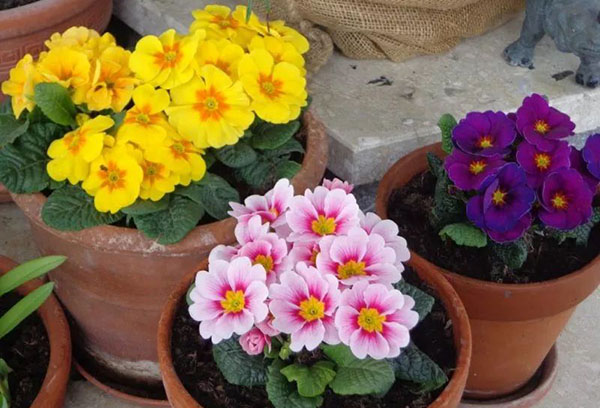
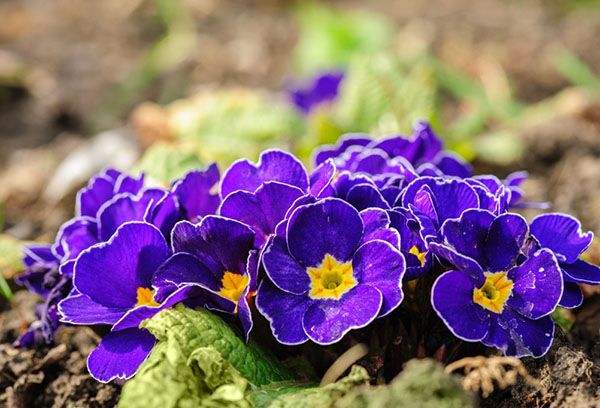
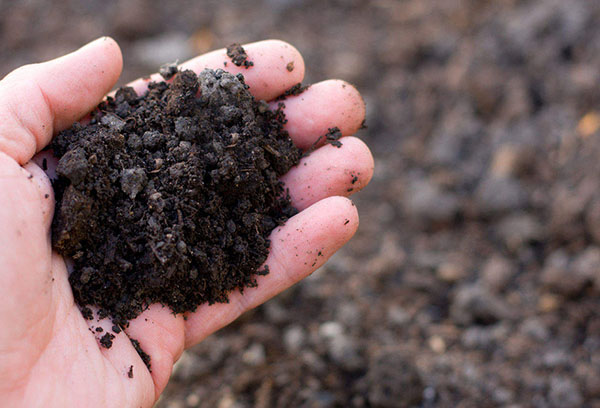


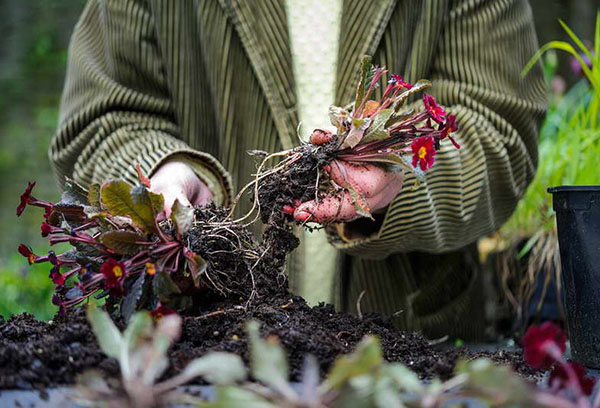
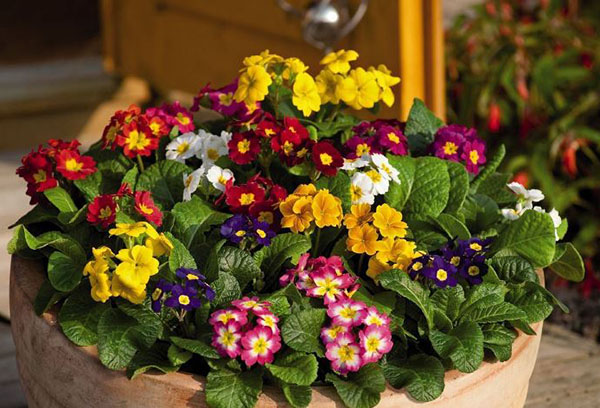
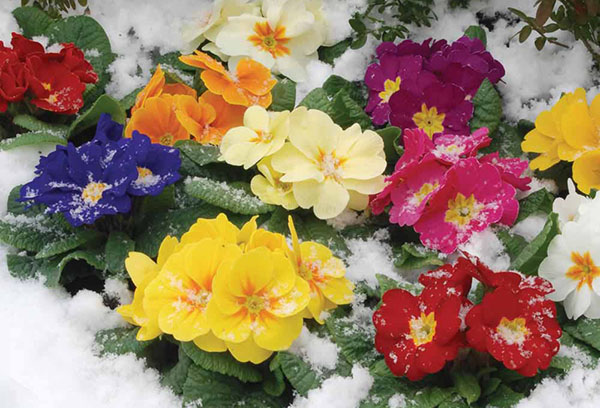

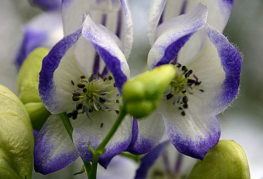
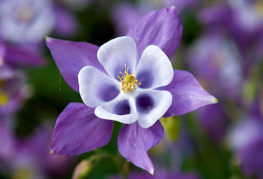


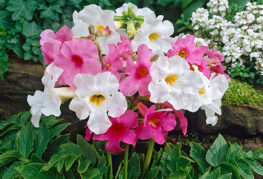
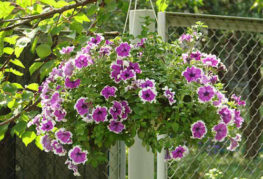
and will be published shortly.